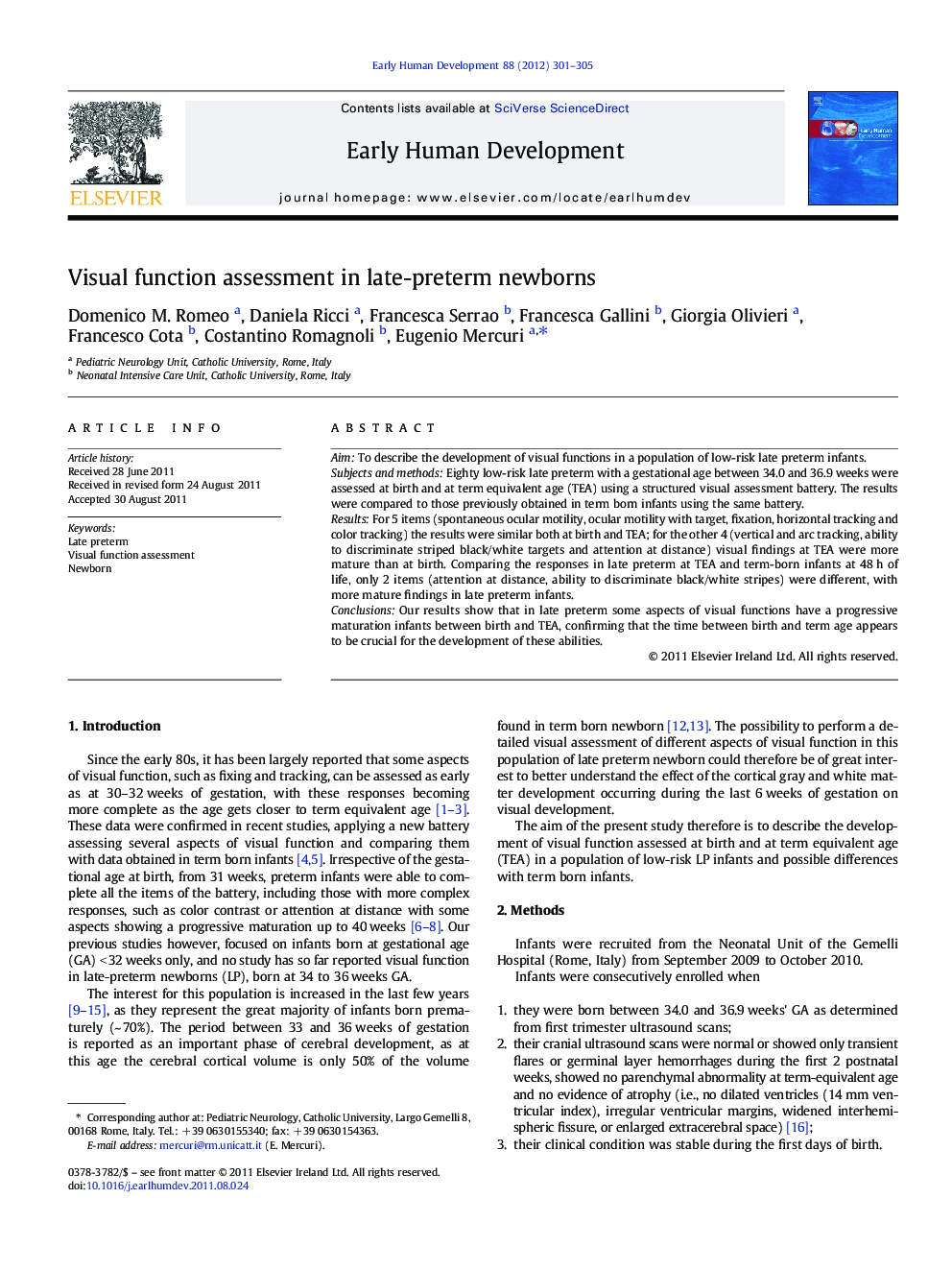| Article ID | Journal | Published Year | Pages | File Type |
|---|---|---|---|---|
| 6172157 | Early Human Development | 2012 | 5 Pages |
AimTo describe the development of visual functions in a population of low-risk late preterm infants.Subjects and methodsEighty low-risk late preterm with a gestational age between 34.0 and 36.9Â weeks were assessed at birth and at term equivalent age (TEA) using a structured visual assessment battery. The results were compared to those previously obtained in term born infants using the same battery.ResultsFor 5 items (spontaneous ocular motility, ocular motility with target, fixation, horizontal tracking and color tracking) the results were similar both at birth and TEA; for the other 4 (vertical and arc tracking, ability to discriminate striped black/white targets and attention at distance) visual findings at TEA were more mature than at birth. Comparing the responses in late preterm at TEA and term-born infants at 48Â h of life, only 2 items (attention at distance, ability to discriminate black/white stripes) were different, with more mature findings in late preterm infants.ConclusionsOur results show that in late preterm some aspects of visual functions have a progressive maturation infants between birth and TEA, confirming that the time between birth and term age appears to be crucial for the development of these abilities.
